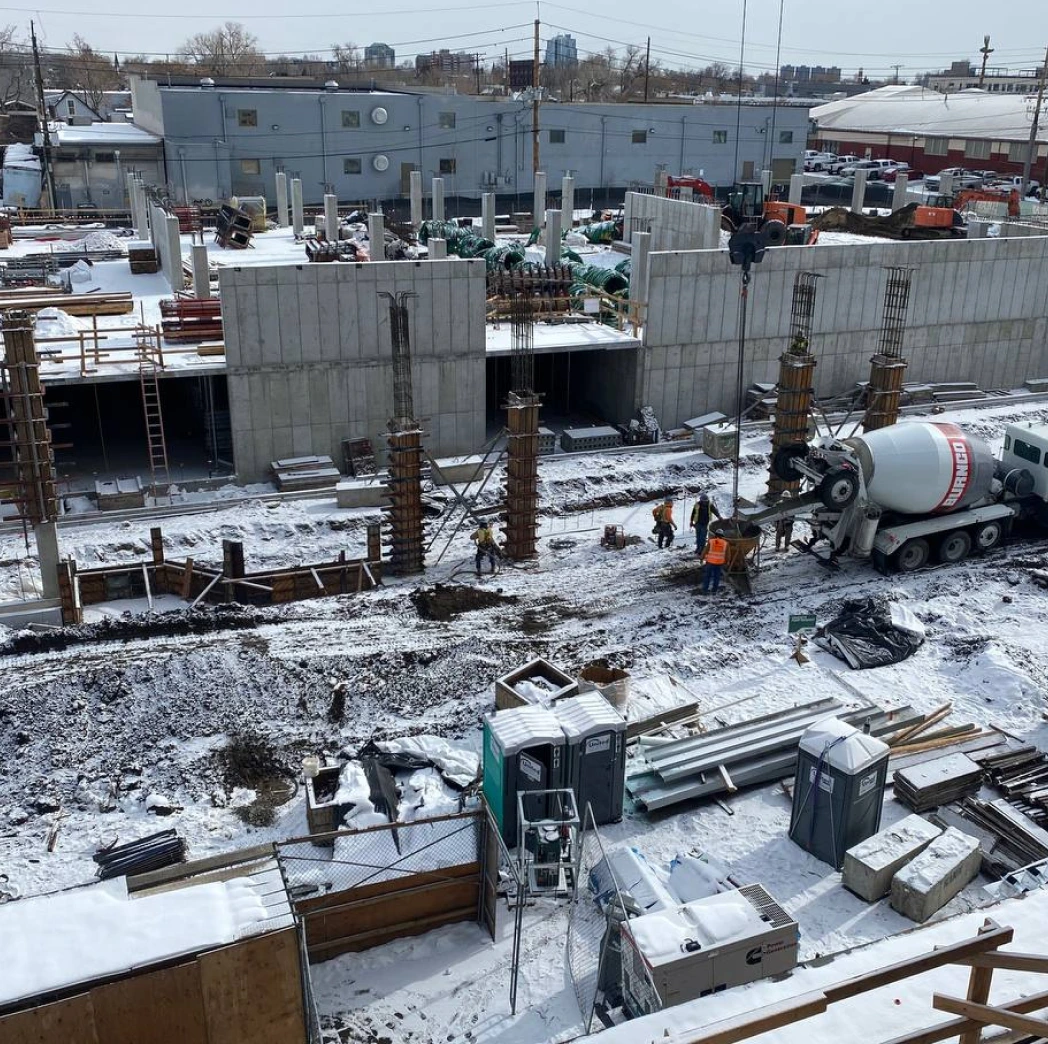Let’s be honest—canceling a pour isn’t always an option

Let’s be honest—canceling a pour isn’t always an option. In many places, you don’t have the luxury of waiting for perfect weather, and the work needs to move forward no matter what. But here’s my advice: don’t let pressure force you into a bad decision. If you’re not prepared, and you see a better weather window in the next few days, consider rescheduling.
I’ve been in this situation before—sometimes the superintendent or the schedule makes it feel like you have no choice but to push ahead. But construction is full of risk, and making the right call comes down to knowledge. If you understand the requirements of cold weather concreting, you’ll be able to make informed decisions that keep your project on track without compromising quality.
According to ACI 306R-16 (Guide to Cold Weather Concreting), cold weather is defined as when the air temperature falls below 40°F for more than three consecutive days and the temperature is not higher than 50°F for more than half of any 24-hour period. Under these conditions, concrete requires special precautions to ensure proper curing and long-term durability.
If you’re pouring a slab on grade, the subgrade must be heated to at least 33°F and kept thawed to a depth of at least 4 inches before placement. Pouring over frozen ground is a guaranteed way to weaken your concrete and increase settlement issues later. If temperatures have been below 33°F in the past 12 hours, keep heated blankets on the subgrade until it’s fully thawed.
For elevated slabs, you have additional concerns—formwork temperature and moisture retention. The formwork (whether wood or metal) can act as a heat sink, drawing warmth away from the concrete. Insulating the formwork and ensuring it’s not below 32°F before pouring is crucial to achieving a uniform cure.
ACI 306.1 states that concrete must be maintained at a minimum temperature of 50°F for the first 48 hours to ensure proper hydration. If ambient temperatures drop below 40°F, you need to use heated enclosures, insulated blankets, or other approved curing methods.
This is even more critical for post-tensioned slabs, where you have to reach a minimum required strength before you can start stressing the tendons. If you don’t implement the protection period correctly, your schedule will suffer.
I’ve personally experienced this on a project in Denver, CO, where an elevated PT slab was poured in December under extremely cold conditions. The mix didn’t perform well in the low temperatures, and the PT operations were delayed for months. The entire deck and the quality of the concrete remained under investigation for a long time. Poor concrete quality was one of the biggest issues, and it all traced back to the extreme cold and a mix that simply wasn’t suitable for those conditions. That’s why you need to ensure your concrete supplier is providing a mix that can handle the weather—you have to trust that their design will actually perform as expected.
A cold-weather concrete pour is only successful if you track your internal temperatures. Use sensors that comply with ASTM C1064 (Temperature Measurement of Freshly Mixed Concrete) and coordinate with the project’s geotechnical engineer to ensure all monitoring devices are compatible.
If temperatures drop below 40°F at any time during the protection period, additional testing (including coring) may be required to confirm that the concrete hasn’t been compromised.
One company I’ve had a really good experience with is Giatec, which provides reliable concrete monitoring technology. Their app makes tracking temperatures straightforward, and their customer service has been solid whenever I needed support. Having the right tools in place makes all the difference, especially in challenging conditions like this.
I’ve learned through experience that cutting corners in cold weather pours is never worth it. The risks of frozen subgrades, weak concrete, and delayed stressing operations can easily cost you more time than simply waiting for better weather or properly preparing your site.
If you have no choice but to pour, follow these best practices, use ACI guidelines as your reference, and ensure that you’re controlling every variable possible. Cold weather concreting isn’t impossible—it just requires planning, patience, and the right execution.
Explore Real Strategies, Trends, and Tips to Help Your Brand Grow.